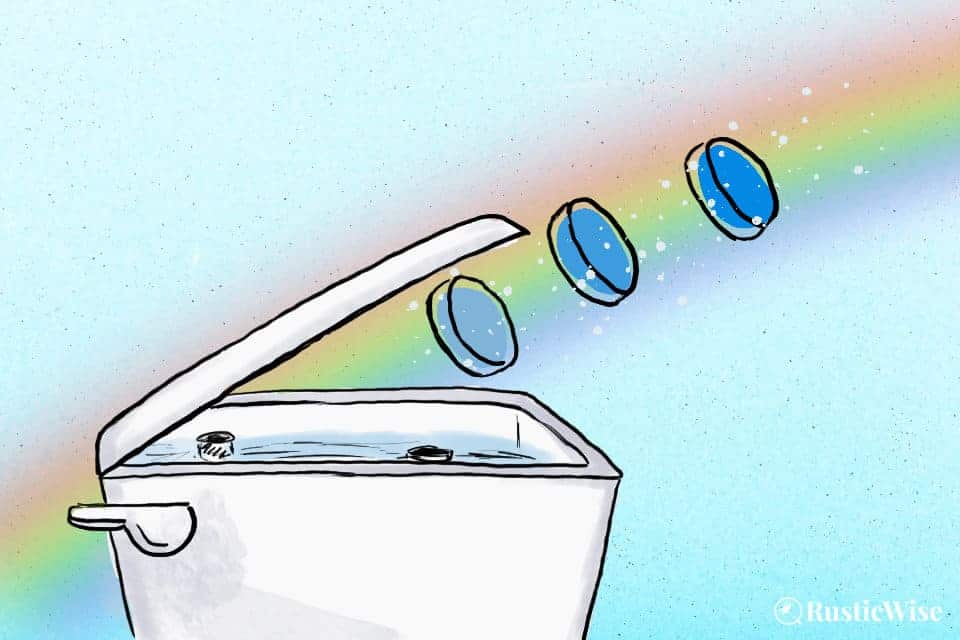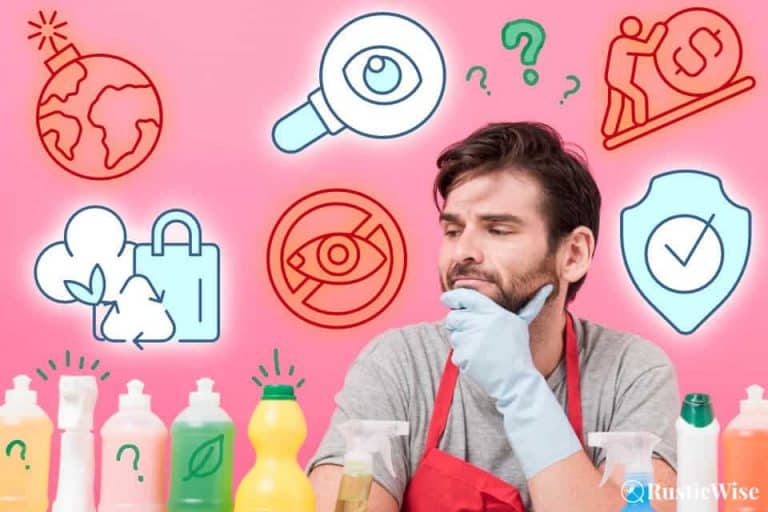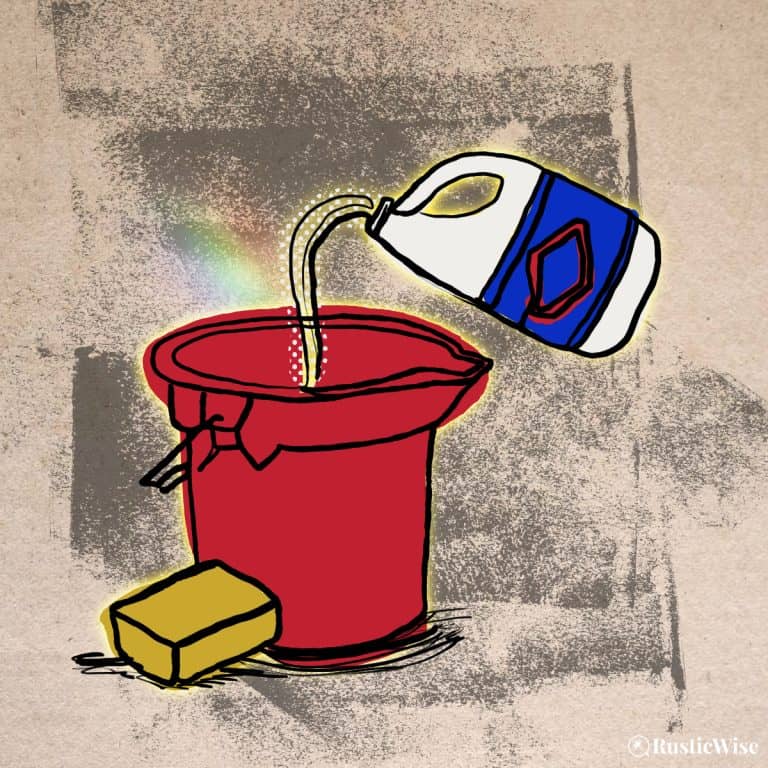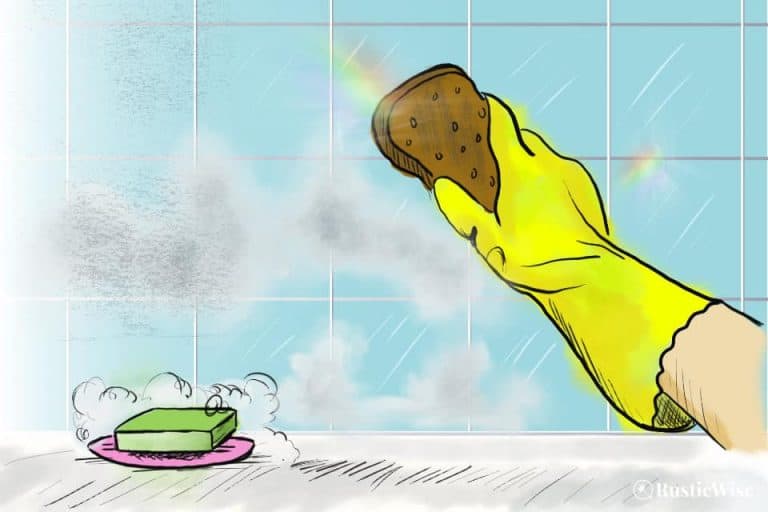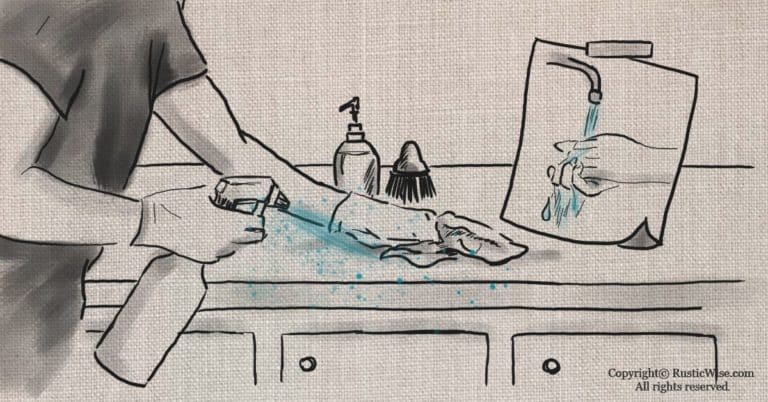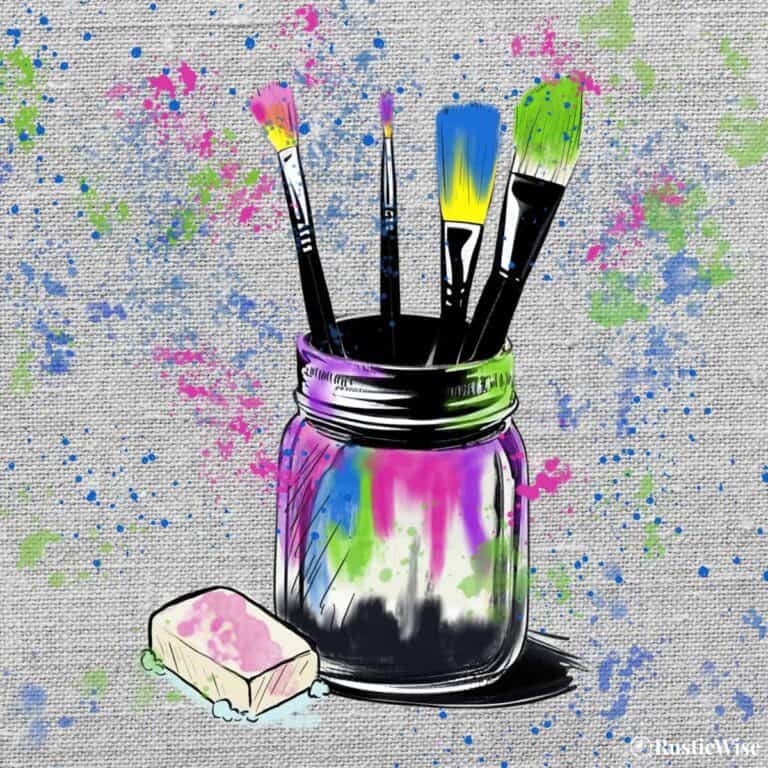Safe Toilet Tank Tablets? 7 Reasons To Skip Toilet Tablets + Safe DIY
Have you become accustomed to seeing bright blue water every time you flush? Chances are, you’re using blue toilet tablets. You might have also heard the news that plumbers and toilet manufacturers alike frown upon the use of these drop-in toilet tank cleaners.
You might wonder, do safe toilet tank tablets exist? Sadly, most commercial toilet tank tablets are not safe for your toilet (or your health). Most contain bleach, which can weaken rubber and plastic components in the tank, as well as corrode metal bolts. Over time, it may cause toilet leaks.
Luckily, there are natural, yet effective ways to keep your porcelain bowl sparkling clean. I’ll share an easy DIY toilet cleaner recipe using baking soda, citric acid, and essential oils.
How do toilet tank tablets work, exactly?
Do toilet tank tablets work to keep your toilet clean and mask unpleasant odors? Absolutely. But are these blue tablets safe to use? Unfortunately, no.
Toilet tank tablets contain bleach and a host of other chemical cleaners that are designed to clean your toilet with every flush. Simply pop a tablet into the toilet cistern and let the tablet work its magic.
The harsh chemicals found in cleaning tablets sit in the toilet’s tank for a long time until it slowly dissolves. During this time, the working components of the tank are constantly exposed to these chemicals.
Drop-in tablets for toilet tanks are marketed as a simple solution to deal with a chore that nobody likes to do—scrub toilets. Initially hailed as a time-saver and widely adopted by pretty much anyone who hates cleaning commodes, the shine has faded on this cleaning product.
Toilet manufacturers and plumbers alike cry foul on this product after noticing worn-out parts and malfunctioning toilets—well before their time. The best toilet bowl cleaner is one that’s free of harsh chemicals.
Note: It’s especially important NOT to place toilet cleaning capsules in toilets that are not in regular use (such as guest toilets). As these toilets are not flushed regularly, the cleaning tablet sits there for longer, wreaking more havoc on the toilet’s working mechanisms.
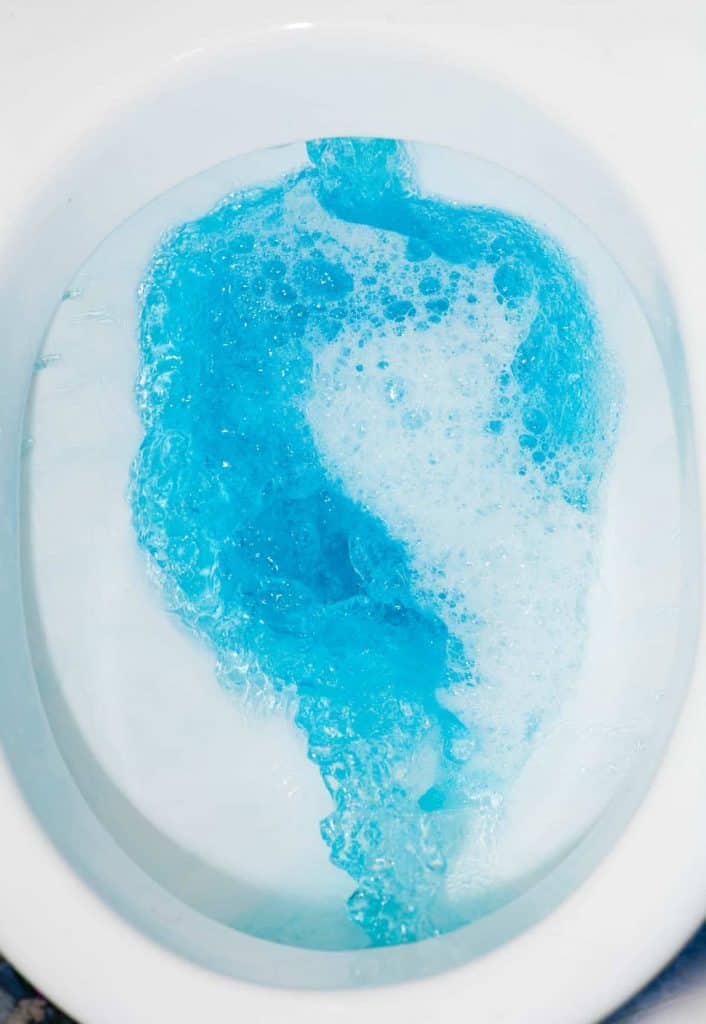
7 solid reasons NOT to use leave-in toilet tank tablets
Here’s why those blue toilet tablets might actually harm your throne and plumbing. These convenient cleaners aren’t good for your health or the environment either.
They contain bleach which harms your toilet and plumbing in several ways.
The main active ingredient in household chlorine bleach is a sodium hypochlorite solution which typically ranges in concentration between 2 and 10 percent. Bleach is a strong alkaline substance which can damage certain materials, including rubber, plastic, and some metals.
Let’s take a closer look at why you should steer clear of drop-in toilet tank cleaners.
1. Damages rubber components such as the rubber flapper
Rubber components are the first to deteriorate under constant exposure to caustic substances such as bleach and other cleaning chemicals.
Rubber seals, gaskets, and valves break down quickly when you use drop-in toilet tank cleaners.
The flapper valve (aka toilet flapper) is an integral part of the toilet. It rests on the base of the tank and lifts up and down to release water with every flush. If your toilet isn’t flushing properly, check the flapper valve!
2. Makes plastic components more brittle
Bleach exposure also affects plastic parts in the toilet cistern.
In particular, the toilet fill valve, the flush valve, and the overflow valve and tube may become brittle and form cracks.
The toilet fill valve tops up the toilet tank with water after each flush.
The flush valve clears waste from the toilet bowl.
The overflow valve and tube prevent excess water from flooding into the tank and splashing onto bathroom flooring.
3. Corrodes metal bolts and creates rust stains
And let’s not forget the metal bolts which hold everything together. Sitting in a chemical cocktail with bleach causes metal parts to corrode and create rust stains.
Over time, the bolts that secure important connections weaken and may lead to toilet leaks.
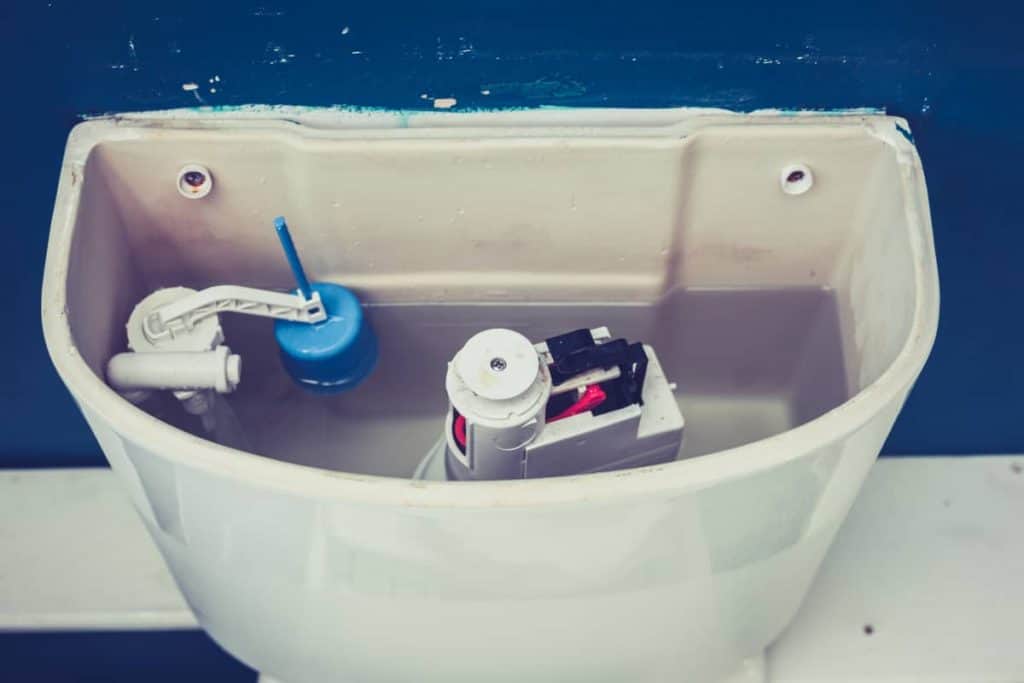
4. May cause costly toilet leaks or toilet repairs
Leaky toilet? Toilet not flushing?
Once the rubber, plastic, and metal components eventually wear down, it’s no surprise that leaks develop. They can occur in several areas, including the toilet bowl, cistern, the water supply line, or underneath the toilet.
You’ll need to shell out for replacement toilet parts, and possibly hefty plumbing fees. In worst-case scenarios, leaky lavatories may damage bathroom flooring and create foul odors.
Unless you know how to fix plumbing issues yourself, you’re stuck with a costly bill.
5. May void your manufacturer’s toilet warranty
These blue tablets have earned themselves a nasty reputation amongst toilet manufacturers and plumbers. Many manufacturers have stated warnings on their warranties, excluding coverage if you choose to use cleaning tablets.
American Standard’s toilet warranty states:
WARNING: This warranty DOES NOT COVER any damages caused by the use of in-tank cleaners. These products can seriously corrode the fittings in the tank. This damage can cause leakage and property damage. American Standard will not be responsible or liable for any damage caused by the use of in-tank cleaners.¹
6. Tablet chunks may get stuck in pipes or in between toilet flapper
While these cleaning drop-ins are supposed to dissolve slowly over time, sometimes large chunks break off and get stuck in unexpected places.
You may notice your toilet working harder, and using more water.
A common issue many people have occurs when a piece of the cleaning tablet gets lodged inside the flush valve. This impedes the flow of water and waste.
Other times, pieces of the cleaning tab can get stuck underneath the toilet flapper, which prevents proper flushing.
7. Cleaning tablets are harmful for your health and the environment
Toilet tank tablets aren’t exactly great for your health or the environment.
Your indoor air quality is bombarded with a constant stream of chemicals. While we normally ventilate the bathroom when doing regular cleaning, this isn’t the case with toilet tablets.
Your furry friends who drink out of the toilet bowl may also get sick from drinking toilet bowl water. Not to mention that tablets look like candy to young kids and are highly toxic if ingested.
The U.S. Environmental Working Group (EWG) gives Clorox Automatic Toilet Bowl Cleaner a rating of “F” because of its “ingredients with potential for skin irritation/allergies/damage; acute aquatic toxicity; respiratory effects.”²
In particular, this toilet tab contains 1,3-Dichloro-5-ethyl-5-methylhydantoin which is toxic to aquatic life, causes severe skin burns and eye damage, harms the respiratory system, may lead to allergic skin reactions.
It also contains sodium hypochlorite, which is the active ingredient in chlorine bleach. Sodium hypochlorite is highly toxic to aquatic animals and also causes severe eye and skin damage. It may also trigger asthma. Most sodium hypochlorite contains impurities which are possible carcinogens and may cause damage to organs and the reproductive system.³
Safe toilet tank tablets? Natural ways to keep your toilet fresh
If you want to keep your toilet tank and bowl clean and free of nasty germs and odors, there’s a natural ingredient you can use. It’s one that you probably already have: white distilled vinegar.
Vinegar is an organic acidic cleaning agent which helps to deodorize, disinfect, and remove hard water stains and mineral buildup. Most bottles of vinegar contain around 5 percent acetic acid, which gives this liquid its cleaning power.
The easiest way to keep your toilet sparkling clean is with regular toilet bowl cleaning.
Tip: About once a week, add 1/2 cup of white vinegar to the toilet tank to keep your toilet sparkling clean.
Now, are you ready to make your own DIY natural toilet cleaner?
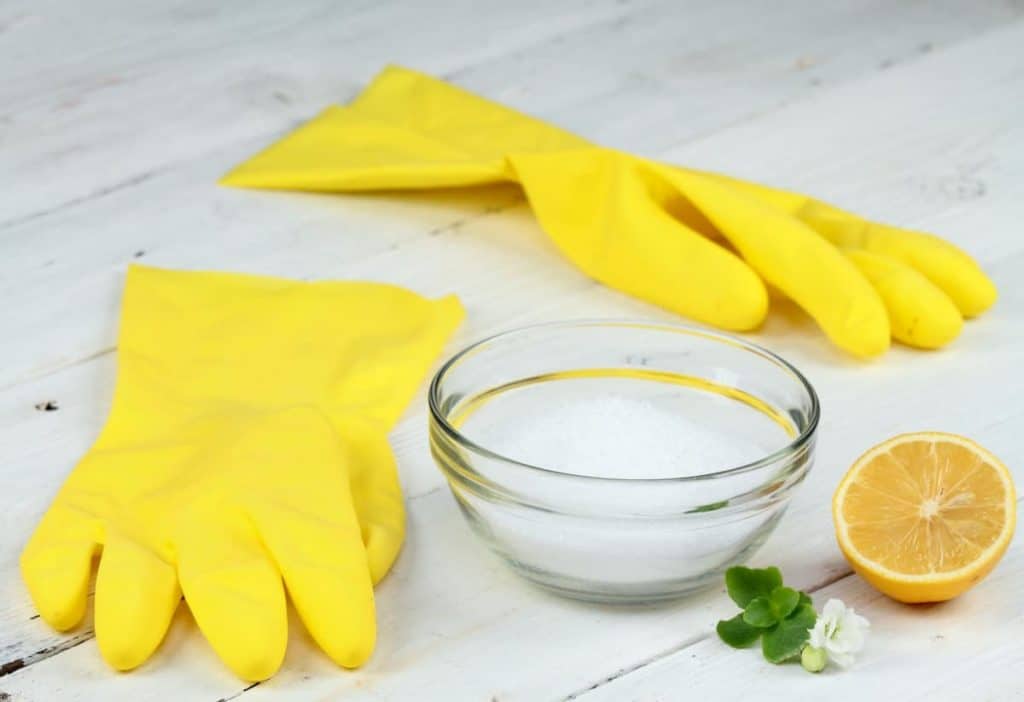
Credit: Deposit Photos
DIY Natural Toilet Cleaning Powder
Baking soda is a mild alkali and a scratchless abrasive that helps remove dirt buildup without damaging your toilet bowl.
Citric acid is an organic acid that removes hard mineral deposits, rust and has antimicrobial properties.
Some essential oils have antibacterial properties too, such as tea tree oil, lemon essential oil, sweet orange essential oil, and lavender essential oil.
The combination of baking soda and citric acid creates a lovely fizzing when added to water.
This recipe is adapted from the University of Arkansas.⁴
Yield: Enough to clean toilets 36 times
Ingredients you’ll need:
- 1 cup baking soda
- ½ cup citric acid
- 10 drops essential oil, for scent
Supplies you’ll need:
- Sealable storage container and label
- Large mixing bowl
- Measuring cups
- Whisk
- Funnel
- Whisk baking soda and essential oil in a large mixing bowl. Continue to whisk until there are no more clumps. You can choose any type of essential oils, but some have antibacterial properties for added cleaning power: tea tree oil, lemon essential oil, sweet orange essential oil, and lavender essential oil.
- Add citric acid and whisk until well mixed.
- Store toilet cleaning powder in a clearly labelled and air-tight container.
To use, simply sprinkle around 2 teaspoons of the natural toilet cleaner into the toilet bowl. Let it sit for several minutes (you’ll notice it fizzes). Use a toilet brush to scrub the bowl clean. Flush.
You’re done!
Related questions
What does putting vinegar in your toilet tank do?
As a gentle and natural acidic cleaner, vinegar keeps your toilet tank (and the bowl) clean with every flush. It gently disinfects and neutralizes foul odors. Don’t worry about your bathroom reeking of vinegar—adding 1/2 cup to the tank is a small amount, and any smell quickly dissipates.
What happens when you put baking soda in your toilet tank?
Baking soda is a mild abrasive alkali made from mineral salts. Once your toilet tank is drained, you can apply a bit of baking soda onto a damp sponge to scour the inside of the tank. Baking soda works to gently remove any dirt and grime. Rinse with water and flush.
How long do blue toilet tablets last?
Most commercial toilet tablets last up to 3 months.
How do you dissolve a toilet tablet stuck in the toilet?
If you accidentally flushed a toilet cleaning tablet down the toilet only to find it stuck, here’s how to unclog it.
Try pouring hot (not boiling water) down the toilet. (Boiling water may cause the porcelain bowl to crack.) Let the hot water sit for 10 minutes. The warm water should help soften and dissolve the tablet. Then, using a plunger, pump vigorously up and down.
If this fails, a plumbing snake can help remove the clog. Failing this, a plumber is your best bet.
Would you like more timeless tips via email?
Fun tips to help you live an independent, self-sustaining lifestyle. Opt-out at any time.


References
- American Standard, Limited Warranty, https://www.americanstandard.ca/support/warranty/warranty-cadet-pro-cadet-3-cadet-touchless-h2optimum-h2option-loft-studio-toilets. Accessed June 2022.
- U.S. Environmental Working Group (EWG), Clorox Automatic Toilet Bowl Cleaner Bleach & Blue, Rain Clean, https://www.ewg.org/guides/cleaners/2234-CloroxAutomaticToiletBowlCleanerBleachBlueRainClean/. Accessed June 2022.
- U.S. Environmental Working Group (EWG), SODIUM HYPOCHLORITE, https://www.ewg.org/guides/substances/14153-SODIUMHYPOCHLORITE/. Accessed June 2022.
- University of Arkansas, Spring Cleaning Tips, https://www.uaex.uada.edu/counties/carroll/torries-top-tips-blog/posts/green_cleaning.aspx. Accessed June 2022.

Author: Josh Tesolin
Josh is co-founder of RusticWise. When he’s not tinkering in the garden, or fixing something around the house, you can find him working on a vast array of random side projects.

